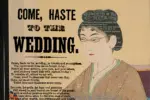In our ever-diversifying American culture, more and more celebrities have come forward in defiance of traditional, normative practices, and many famous women have been working to break the barriers of antiquated and restrictive gender roles, using their platform to empower young girls. But young men lack the same examples; boys are encouraged to look up to hypermasculine athletes and actors who are the epitome of masculine stereotypes: the strongest, most aggressive and powerful ladies’ men. “Toxic masculinity” is a bit of a catchphrase in current pop culture, but it’s not just a woke-sounding term to throw around at parties; it addresses a real issue that society has been battling for decades.
When boys are subjected to persistent, one-dimensional displays of what being a man looks like (aggressive, domineering, unemotional, etc.), it can negatively manifest as violent, abusive practices. And the idea is simply exclusive; many boys find that they tend to be more emotional, passive and sensitive than athletic, outdoorsy or handy, so aside from the violent worst-case scenarios, which can arise as a result of these practices, the most damaging aspect of toxic masculinity is the way it solely caters to the straight, cis, hypermasculine men of the world.
Though the healthy masculinity bandwagon has been slow to start, there are quite a few male celebrities who are starting to get the ball rolling.
1. Terry Crews
If there’s any man to look up to, it’s Terry Crews. He’s got it all: the looks, the muscles, the ability to play the drums by flexing. But Crews has been a constant advocate for healthy masculinity, whether it’s as his current character Terry Jeffords on NBC’s “Brooklyn Nine-Nine,” where he plays a sensitive, emotional police sergeant and father of two girls, or through his prominent presence in the #MeToo movement. Terry Crews sets a great example for men, showing that it’s completely okay to be hard on the outside and soft on the inside.
VULNERABILITY IS NOT A WEAKNESS!!! #MondayMotivation
Get motivated for #AGTonTuesday! pic.twitter.com/DSoRTiGUix
— Terry Crews (@terrycrews) June 17, 2019
2. Jaden Smith
Twenty-year-old Jaden Smith is a good role model for young men. Having grown up under the scrutiny of the public eye, the actor and artist hasn’t been afraid to experiment with his identity or style, and when asked about his often genderfluid clothing preferences, Smith told GQ, “I feel like people are kind of confused about gender norms. I feel like people don’t really get it.”
The former child star utilizes his platform as a public figure to effect social change and deconstruct ideas of toxic masculinity so that, as he explained in an interview with Nylon Magazine, “in five years when a kid goes to school wearing a skirt, he won’t get beat up and kids won’t get mad at him.” Talk about someone being way ahead of their time.
3. Chase Ross
Healthy masculinity isn’t just a problem for cis men. Canadian YouTuber and activist Chase Ross, one of the few trans male celebrities rising to stardom, is known for making comedic and informational videos for trans guys that discuss sex, relationships and navigating life as a trans man who is also gay.
More often than not, the few trans men who can say they are well-known are cut from the same cloth: they’re straight, passing and overtly masculine. While Ross himself definitely passes, his fearlessness towards his own femininity (just look at his cat wall) and openness about his sexuality is a breath of fresh air in the trans male community.
4. Frank Ocean
Hip-hop artist Frank Ocean has been quite open about his fluid sexuality, even using his experiences as inspiration for his music, and while this is not new in the music world, Ocean is a pioneer for the rap community, a space often ridden with misogyny and homophobia. The artist’s identity isn’t the only thing challenging hip hop culture; Ocean’s musical style is generally laid-back and soft, and his lyrics depict a sensitive, vulnerable demeanor.
https://www.instagram.com/p/BwUwEDTlAzU/
This is a far cry from traditional rap, which perpetuates the myth that black men are angry, violent and aggressive. One day — perhaps, in part, through Frank Ocean’s efforts — rap may evolve to have more diverse qualities. In the meantime, fans bide their time by anxiously awaiting Ocean’s next album release.
5. Lin-Manuel Miranda
The actor, writer, rapper and creator of “Hamilton” (and father of two boys) wears his many hats well, but one of the things that makes the Grammy-winner so special is his ability to appear vulnerable. When he won a Tony for “Hamilton,” Miranda delivered an emotional and heart-wrenching speech about the Pulse nightclub shooting of 2016, asserting that “Love is love” over and over again. He also delivered a skillful freestyle performance with Emma Watson for International Women’s Day that same year.
Feminist politics are often the enemy of hypermasculinity, so it’s refreshing to see someone who so adamantly supports women and other marginalized groups without resentment.
6. Kurtis Gabriel
Sports culture is one of the hardest areas to tackle when it comes to unlearning toxic masculinity. In most major men’s leagues, the list of active players who are out as LGBTQ is currently nonexistent, while the list of professional players with a domestic violence charge is astoundingly high. These are two tropes of the hypermasculine man: homophobic and aggressive.
In spite of these statistics, there is hope for change. The NHL has rallied hard for Pride this year, adopting the phrase “Hockey is for Everyone” and committing players to effect real change. One player, in particular, has gained more attention than the rest: Kurtis Gabriel, right wing for the New Jersey Devils, gained traction on social media for his Pride celebration post, after receiving positive fan feedback for donning rainbow tape on his stick.
Just a friendly remjnd hockey is for everyone. Everything is for everyone…except maybe a giraffe wanting to be a rock climber, I don’t know about that one 🦒💔 #gaypride 🌈 pic.twitter.com/XBpPglI3zq
— Kurtis Gabriel (@kurtisgabriel) February 28, 2019
While there’s no need to give out a medal for stick tape (Gabriel himself has said that he isn’t exerting much effort through his action), the athlete’s intentions are groundbreaking in professional sports. “It meant something to people,” he told Outsports. While the action itself was small, its effect has the capacity to ripple into something greater, and perhaps that means, one day, we’ll see a more diverse and inclusive NHL and, for that matter, other professional sports leagues.
















